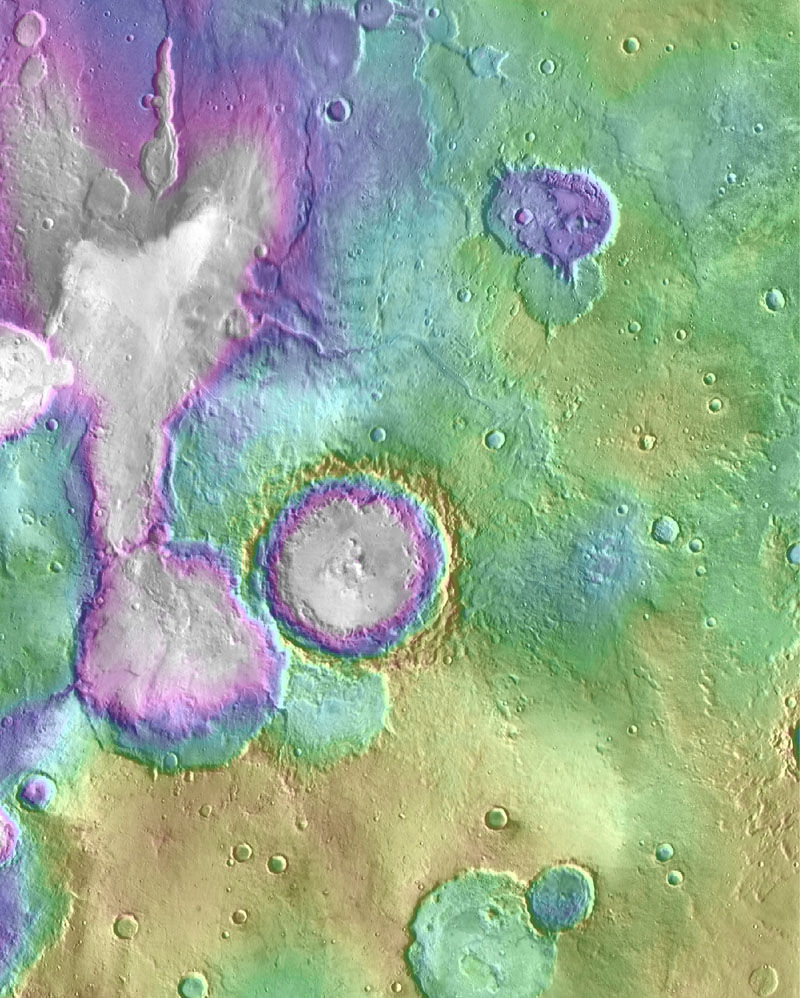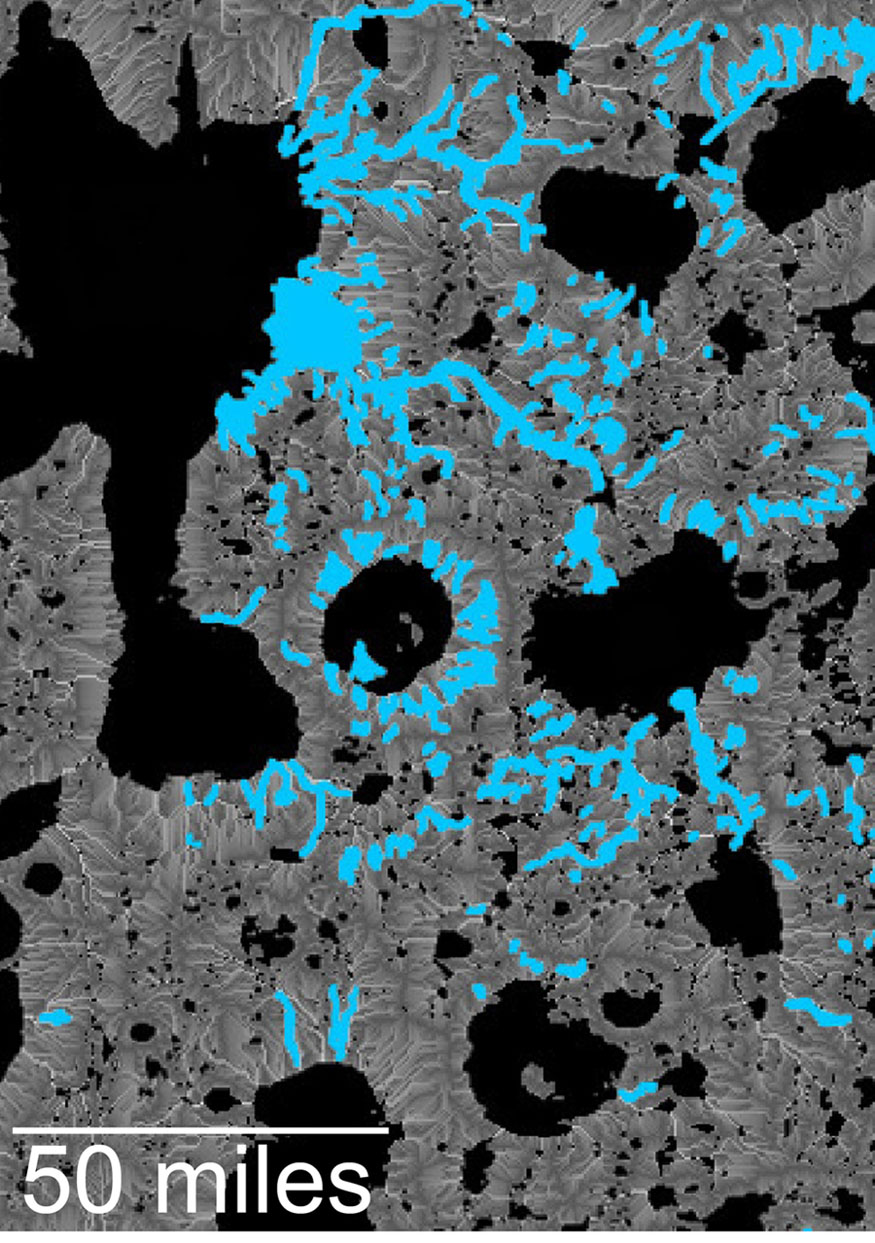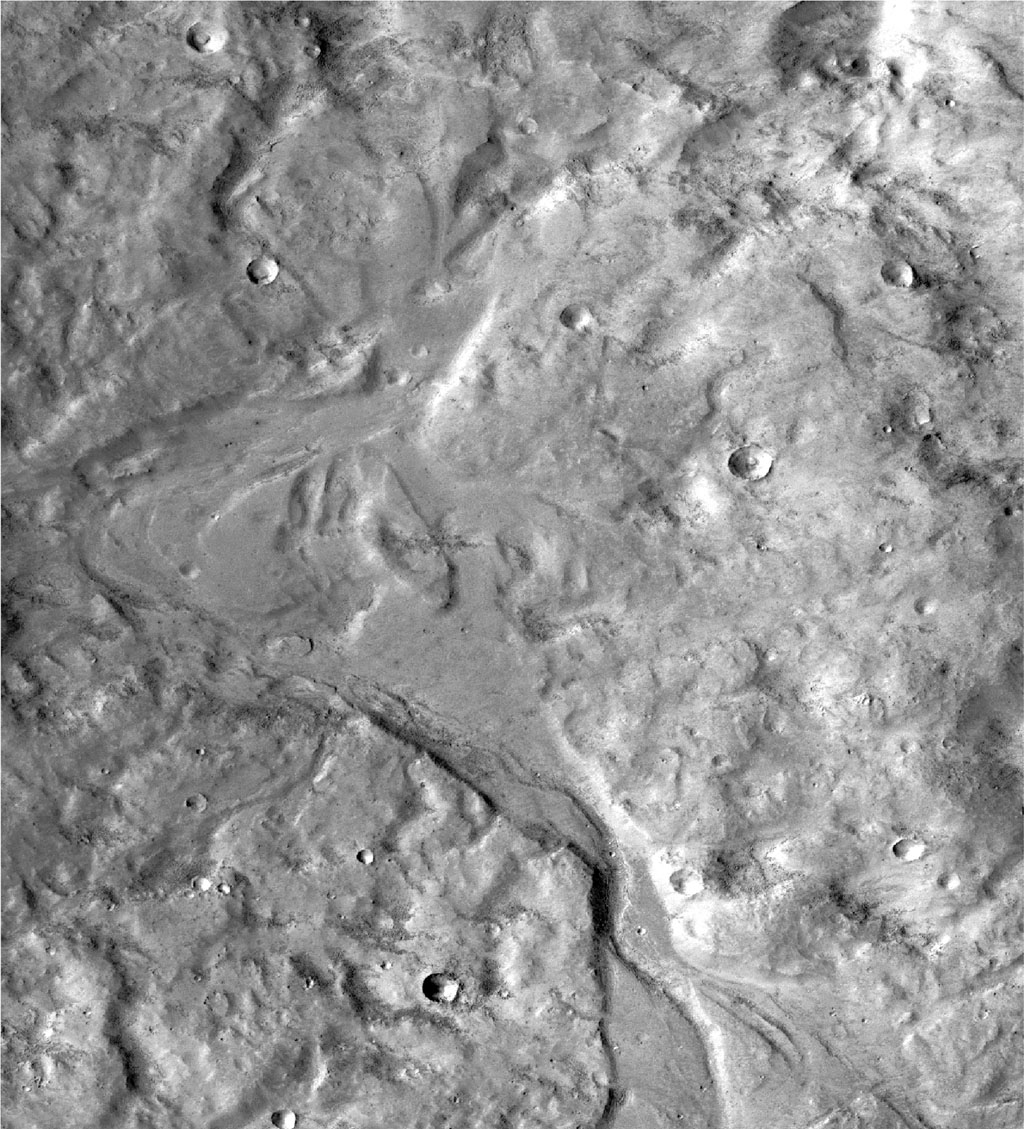

| Online: | |
| Visits: | |
| Stories: |

| Story Views | |
| Now: | |
| Last Hour: | |
| Last 24 Hours: | |
| Total: | |
Some Ancient Mars Lakes Came Long After Others
Lakes and snowmelt-fed streams on Mars formed much later than previously thought possible, according to new findings using data primarily from NASA’s Mars Reconnaissance Orbiter.
The recently discovered lakes and streams appeared roughly a billion years after a well-documented, earlier era of wet conditions on ancient Mars. These results provide insight into the climate history of the Red Planet and suggest the surface conditions at this later time may also have been suitable for microbial life.
“We discovered valleys that carried water into lake basins,” said Sharon Wilson of the Smithsonian Institution, Washington, and the University of Virginia, Charlottesville. “Several lake basins filled and overflowed, indicating there was a considerable amount of water on the landscape during this time.”

Wilson and colleagues found evidence of these features in Mars’ northern Arabia Terra region by analyzing images from the Context Camera and High Resolution Imaging Science Experiment camera on the Mars Reconnaissance Orbiter and additional data from NASA’s Mars Global Surveyor and the European Space Agency’s Mars Express.
“One of the lakes in this region was comparable in volume to Lake Tahoe,” Wilson said, referring to a California-Nevada lake that holds about 45 cubic miles (188 cubic kilometers) of water. “This particular Martian lake was fed by an inlet valley on its southern edge and overflowed along its northern margin, carrying water downstream into a very large, water-filled basin we nicknamed ‘Heart Lake.’”
The chain of lakes and valleys that are part of the Heart Lake valley system extends about 90 miles (about 150 kilometers). Researchers calculate Heart Lake held about 670 cubic miles of water (2,790 cubic kilometers), more than in Lake Ontario of North America’s Great Lakes.
Wilson and co-authors of the report in the Journal of Geophysical Research, Planets, map the extent of stream-flow in “fresh shallow valleys” and their associated former lakes. They suggest that the runoff that formed the valleys may have been seasonal.

To bracket the time period when the fresh shallow valleys in Arabia Terra formed, scientists started with age estimates for 22 impact craters in the area. They assessed whether or not the valleys carved into the blankets of surrounding debris ejected from the craters, as an indicator of whether the valleys are older or younger than the craters. They concluded that this fairly wet period on Mars likely occurred between two and three billion years ago, long after it is generally thought that most of Mars’ original atmosphere had been lost and most of the remaining water on the planet had frozen.
The characteristics of the valleys support the interpretation that the climate was cold: “The rate at which water flowed through these valleys is consistent with runoff from melting snow,” Wilson said, “These weren’t rushing rivers. They have simple drainage patterns and did not form deep or complex systems like the ancient valley networks from early Mars.”
They note that similar valleys occur elsewhere on Mars between about 35 and 42 degrees latitude, both north and south of the equator. The similar appearance and widespread nature of these fresh, shallow valleys on Mars suggest they formed on a global scale rather than a local or regional scale.
“A key goal for Mars exploration is to understand when and where liquid water was present in sufficient volume to alter the Martian surface and perhaps provide habitable environments,” said Mars Reconnaissance Orbiter Project Scientist Rich Zurek of NASA’s Jet Propulsion Laboratory, Pasadena, California. “This paper presents evidence for episodes of water modifying the surface on early Mars for possibly several hundred million years later than previously thought, with some implication that the water was emplaced by snow, not rain.”
Streamlined forms and channel bars in this Martian valley resulted from the outflow of a lake hundreds of millions years more recently than an era of Martian lakes previously confirmed, according to 2016 findings.

Image credit: NASA/JPL-Caltech
Wilson’s co-authors are Alan Howard of the University of Virginia; Jeffrey Moore of the NASA Ames Research Center, Moffett Field, California; and John Grant of the Smithsonian.
NASA’s Mars orbiter missions are advancing understanding about the Red Planet that serves in preparation for human-crew missions to Mars beginning in the 2030s.
Contacts and sources:
Guy Webster
Jet Propulsion Laboratory
Source:


